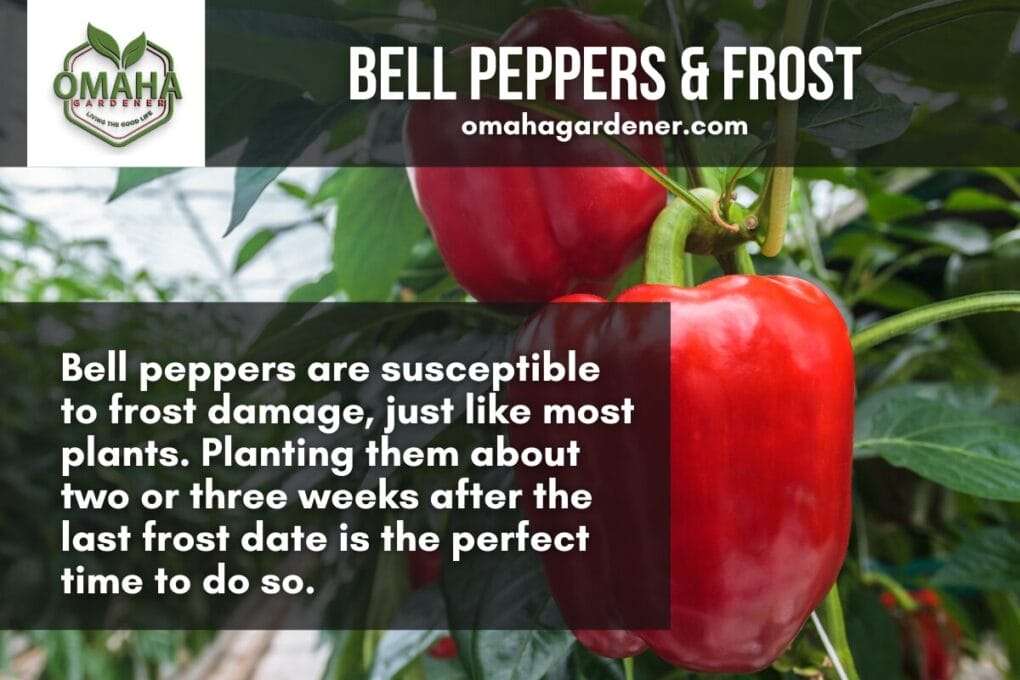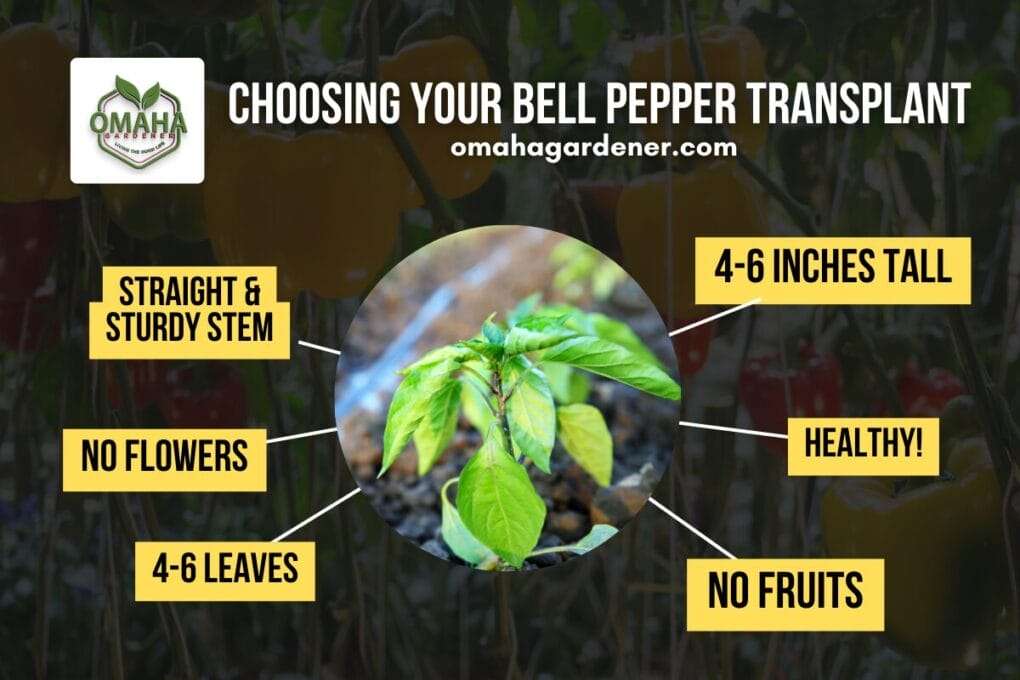
Red, yellow, and green are the colors of bell peppers widely sold in local grocery stores. But believe it or not, they are all the same, just with different ripeness levels. As they mature and ripen, they turn from green to yellow, then orange, and eventually, red. In terms of their flavor profile, riper bell peppers have a sweeter and fruitier flavor than green peppers which have a grassy and bitter taste.
Get ready to spice up your culinary adventures with bell peppers! From Tex-Mex stuffed peppers to traditional Italian peperonata, these vibrant gems offer both color and nutrients. If you're considering growing them in your garden, this is your sign! Join our blog to discover the signs of pepper growth, pro tips, and FAQs. Let's dive right in!
1. Windless Night’s Effect on Planting Bell Pepper
A windless and cloudless evening is usually a telltale sign that a frost is about to happen. Clouds emit infrared energy that warms up the ground while winds mix up the warm and cold air. Their absence in the night sky allows the cold air to descend to the earth’s surface.
If you see these conditions before you sleep, tomorrow is not the best time to plant your bell peppers. You can also check out dew points and temperature forecasts to make you 100% sure.

Do Not Plant Bell Peppers When It’s About to Frost
Bell peppers are susceptible to frost damage, just like most plants. Planting them about two or three weeks after the last frost date is the perfect time to do so.
2. Straight and Sturdy Bell Pepper Stems
Bell peppers take about 60 to 90 days before they reach maturation, so it is advisable to use starter plants or transplants instead of sowing seeds. I typically start my seeds indoors a couple months before my last frost date.
When choosing starter plants, go for the ones with straight and sturdy stems, with four to six leaves, and without growing flowers or fruits (more of this will be discussed in the next section). They should also be the right size (4-6 inches), not too tall or too short, to ensure that your seedlings will grow properly.

Choosing Your Bell Pepper Transplant
Before planting, make sure that the soil temperature is around 65°F (18°C), then fertilize it with aged manure or compost. Once done, start by digging three to four-inch-deep holes, then fill the holes with water, and fertilizer. The holes where you will plant your starters should be 12 to 18 inches away from each other, in rows that are spaced two to three feet apart.
3. Healthy Foliage Growth But No Bell Peppers?
Are you confused as to why your foliage is growing healthy and beautiful, but the plant is not bearing fruits? It’s because your plants may have too much or too little of nutrients.
During their early growth stage, bell pepper plants need nitrogen to produce healthy leaves. However, now that you’re at the fruiting stage, they need much more phosphorus and potassium to bear the fruits you want.
Use two types of fertilizers throughout the growing season;
- one nitrogen-rich which promotes leaf and root development and
- one phosphorus and potassium-rich which encourages flower and fruit growth.
4. Fallen Bell Pepper Blossoms
If you see blossoms falling from the plant, they are stressed and it might be because:
(1) it’s getting insufficient water supply,
(2) it’s too hot (the temperature is above 85°),
(3) it’s too cold (the temperature is below 60°F), or
(4) maybe it's a combination of two factors!
Here’s what you can do:
- Bell peppers need regular watering with a brief period of relative dryness. Water your plants slowly and deeply, then leave them to almost dry out until you water them again. They need about an inch or so of water per week.
- You may need to water them every day, especially in the summer. Put mulch to maintain moisture. Use row covers to avoid heat stress or exposure to direct sunlight, which will cause peppers to get papery and blister.
- Cover the soil with black or thick plastic. This allows heat to penetrate the soil easily while the plastic maintains the warmth of the soil.
5. Discoloration on the Bell Pepper Leaves
Discoloration on the leaves is generally an indication that your plant has contracted a disease or they are infested with insects. Here are some common bell pepper problems you may encounter and what can you do to save your plants:
Problem | Type | Symptoms | Treatment |
|---|---|---|---|
Mosaic Virus | Virus | Green and yellow mottled leaves | Remove the infected part, as well as insects and weeds that may spread the virus |
Spider Mites | Insect | Presence of webs and yellow specks on the underside of leaves which eventually becomes brown or bronze | Rinse leaves with water then apply insecticidal soap |
Anthracnose | Fungi | Yellow, brown, purple, or black-colored spots on the leaves | Apply fungicide and avoid overhead watering |
Bell Pepper Possible Problems and Solutions
6. Bell Pepper Fruits are Already Palm-Sized
When your bell peppers are 3 to 7 inches long and about 4 inches wide, or about the size of your palm, they are ready for harvest. It usually takes more or less two weeks for your fruits to grow fully once the fruit starts to appear. Small and underdeveloped peppers are bitter and unpleasant.
When harvesting the fruits, use a pair of scissors or pruning shears to cut the thick stems to prevent damaging the plant. Harvest often to encourage the plant to bear more ripe fruits.
Do’s in Growing Bell Peppers
- Harden off your seedlings. Hardening is the process by which you accustom your indoor-grown plants to the outside conditions. Do this by exposing them for an hour first, then as the days go by, gradually increase their time outdoors, until they are ready to be transplanted.
- Leave the fruit on the plant longer if you want riper bell peppers.
- Plant companion plants. This includes basil, onions, and cilantro which masks the scent of your bell peppers and deter pests.
Don’ts in Growing Bell Peppers
- Spray your plants with Epsom salt. This could cause soil imbalance and could result in burned roots and dark foliage.
- Plant on the same soil where you have planted other nightshade family members such as tomatoes, potatoes, and eggplants— this can expose peppers to diseases.
FAQs
Can I still start with bell pepper seeds?
Yes, you still can. Start the seeds by putting them a quarter of an inch deep in a pot filled with potting mix. To speed up germination, the soil temperature should be at 70°F (21°C) or above. Seedlings should appear after about two to five weeks. Thin out the weakest seedling. When roots start to grow out of the drainage holes of the pots, they are ready for transplanting. Remember to harden off the seedlings about 10 days before doing this.
Why is the bottom of the fruit rotting?
If your bell peppers show a rotting bottom, they have a physiological disease called blossom end rot. This is caused by a deficiency in calcium, which is necessary for the formation of the cell walls of the fruit. The lack of this nutrient causes the peppers to rot since the cell walls are not that strong and are collapsing.
Why is bell pepper not spicy?
Bell peppers are not spicy because they do not contain a compound called capsaicin. This is responsible for the heat and burning sensation that we feel when we eat peppers like jalapenos and ghost peppers.
Conclusions
Get ready to become a master gardener, even if you don't have a green thumb! Keep an eye out for frost, choose robust starters, and create the perfect conditions for bell peppers. Watch out for fruitless plants, falling flowers, and leaf discoloration caused by pesky invaders. Once you've conquered these challenges, it's time to harvest those palm-sized treasures. Remember, the secret lies in listening to your plants and taking action. So grab your gardening tools and let's dig in!
<– How to Build a 4×8 Raised Garden Bed for Beginners
Sow and Grow: Seed Starting Indoors and Outdoors. –>



